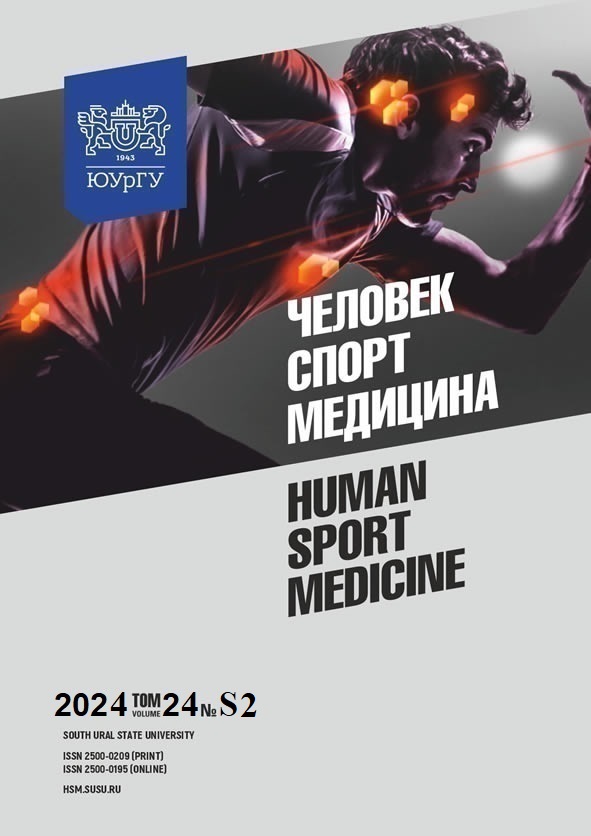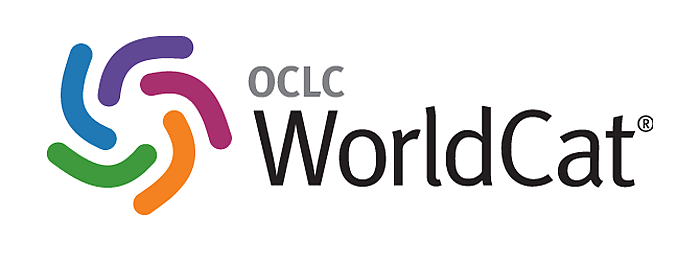РЕЗУЛЬТАТИВНОСТЬ ПЛАВАНИЯ РАЗЛИЧНЫМИ СТИЛЯМИ В ЗАВИСИМОСТИ ОТ ФАЗ ПОЛОВОГО СОЗРЕВАНИЯ И ТЕЛОСЛОЖЕНИЯ ЮНЫХ ПЛОВЦОВ
Аннотация
Цель: определить количественные характеристики влияния особенностей телосложения на результативность плавания на дистанции 100 м различными стилями в зависимости от фазы полового созревания. Материалы и методы. В исследовании приняли участие пловцы – юноши 11–15 лет г. Ханты-Мансийска, разделенные на 3 группы в зависимости от фаз ростового скачка: 1-я – повышения интенсивности роста, 2-я – максимальной интенсивности роста и 3-я – снижения интенсивности роста. Для каждого из юных спортсменов проводились антропометрические измерения, на основе которых рассчитывались индексы телосложения. Впоследствии, полученные индексы сопоставлялись со спортивными результатами в 4 видах спортивного плавания (кроль, спина, брасс, дельфин). Результаты. Для плавания способом кроль на груди высокие уровни взаимосвязи спортивного результата в 3-й группе исследуемых спортсменов были обнаружены с показателями индекса массы тела (r = 0,75), Аре индекса (r = 0,77), индекса Пинье (r = 0,73). Для плавания способом баттерфляй аналогичные взаимосвязи обнаружились относительно индекса относительной ширины плеч (r = 0,76), Аре индекса (r = 0,86), индекса Эрисмана (r = 0,80). Для плавания способом брасс значимые связи обнаружены относительно индекса относительной длины ног (r = 0,78), индекса Пинье (r = 0,70), индекса относительной ширины плеч (r = 0,77). Заключение. Корреляционный анализ позволил определить значимость индексов телосложения для различных способов спортивного плавания, которые имеют выраженную тенденцию к увеличению в 3-й фазе ростового скачка.
Литература
2. Тренировка и спортивный отбор пловцов на этапах многолетней подготовки / Н.Ж. Булгакова, О.И. Попов. В.В. Смирнов, Т.Г. Фомиченко – М., 2015. – 157 с.
3. An assessment of maturity from anthropometric measurements / R.L. Mirwald, A.D. Baxter-Jones, D.A. Bailey, G.P. Beunen // Medicine & Science in Sports & Exercise. ‒ 2002. ‒ № 34 (4). ‒ P. 689–694. DOI: 10.1097/00005768-200204000-00020
4. Anthropometric variables, propulsive force and biological maturation: A mediation analysis in young swimmers / M. Oliveira, R.S. Henrique, D.R. Queiroz et al. // Eur. J. Sport. Sci. – 2021. – No. 4. – Р. 507–514. DOI: 10.1080/17461391.2020.1754468
5. Carvalho, H.M. Mismatches in youth sports talent development / H.M. Carvalho, C.E. Gonçalves // Front. Sports Act. Living. – 2023. – Vol. 5. – Р. 1189355. DOI: 10.3389/fspor.2023.1189355
6. How Anthropometrics of Young and Adolescent Swimmers Influence Stroking Parameters and Performance? A Systematic Review / M. Alves, D.D. Carvalho, R.J. Fernandes, J.P. Vilas-Boas // Int. J. Environ Res. Public Health. – 2022. – Vol. 22. – No. 19 (5). – Р. 2543. DOI: 10.3390/ijerph19052543
7. Key somatic variables associated with, and differences between the 4 swimming strokes / A.M. Nevill, Y. Negra, T.D. Myers et al. // J. Sports Sci. – 2020. – Vol. 38. – Р. 787–794.
8. Linking selected kinematic, anthropometric and hydrodynamic variables to young swimmer performance / J.E. Morais, S. Jesus, V. Lopes et al. // Pediatric Exercise Science. – 2012. – Vol. 24. – Р. 649–664. DOI: 10.1123/pes.24.4
References
1. Davydov V.Yu., Avdienko V.B. Otbor i oriyentatsiya plovtsov po pokazatelyam teloslozheniya v sisteme mnogoletney podgotovki (teoreticheskiye i prakticheskiye aspekty): monografiya [Selection and Orientation of Swimmers According to Physique Indicators in the System of Long-term Training (Theoretical and Practical Aspects)]. Moscow, Soviet Sport Publ., 2014. 384 p.2. Bulgakova N.Zh., Popov O.I., Smirnov V.V., Fomichenko T.G. Trenirovka i sportivnyy otbor plovtsov na etapakh mnogoletney podgotovki [Training and Sports Selection of Swimmers at the Stages of Long-term Training]. Moscow, 2015. 157 p.
3. Mirwald R.L., Baxter-Jones A.D., Bailey D.A., Beunen G.P. An Assessment of Maturity from Anthropometric Measurements. Medicine & Science in Sports & Exercise, 2002, no. 34 (4), pp. 689–694. DOI: 10.1097/00005768-200204000-00020
4. Oliveira M., Henrique R.S., Queiroz D.R. et al. Anthropometric Variables, Propulsive Force and Biological Maturation: A Mediation Analysis in Young Swimmers. European Journal Sport Science, 2021, no. 4, pp. 507–514. DOI: 10.1080/17461391.2020.1754468
5. Carvalho H.M., Gonçalves C.E. Mismatches in Youth Sports Talent Development. Front. Sports Act. Living, 2023, vol. 5, p. 1189355. DOI: 10.3389/fspor.2023.1189355
6. Alves M., Carvalho D.D., Fernandes R.J., Vilas-Boas J.P. How Anthropometrics of Young and Adolescent Swimmers Influence Stroking Parameters and Performance? A Systematic Review. International Journal Environment Research Public Healthcare, 2022, vol. 22, no. 19 (5), p. 2543. DOI: 10.3390/ijerph19052543
7. Nevill A.M., Negra Y., Myers T.D. et al. Key Somatic Variables Associated with, and Differences between the 4 Swimming Strokes. Journal Sports Science, 2020, vol. 38, pp. 787–794. DOI: 10.1080/02640414.2020.1734311
8. Morais J.E., Jesus S., Lopes V. et al. Linking Selected Kinematic, Anthropometric and Hydrodynamic Variables to Young Swimmer Performance. Pediatric Exercise Science, 2012, vol. 24, pp. 649–664. DOI: 10.1123/pes.24.4
Copyright (c) 2025 Человек. Спорт. Медицина

Это произведение доступно по лицензии Creative Commons «Attribution-NonCommercial-NoDerivatives» («Атрибуция — Некоммерческое использование — Без производных произведений») 4.0 Всемирная.















